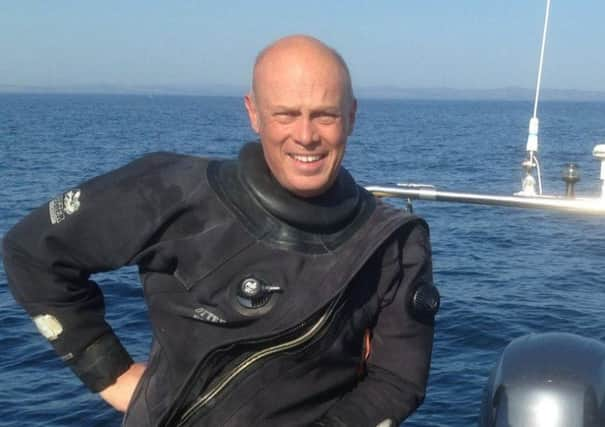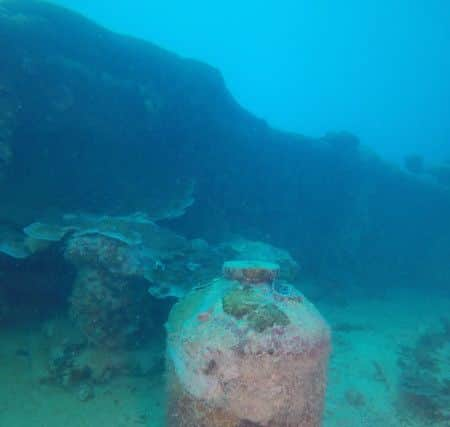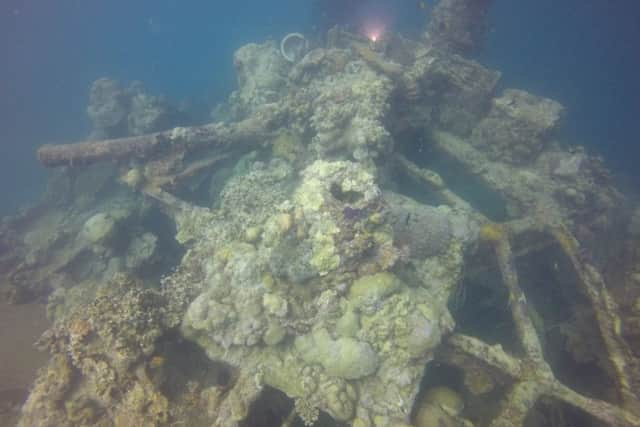Stonehaven wreck diver uncovers secrets of the deep in Palau, Micronesia


Rod Macdonald is a 56-year-old diving author who lives in the small coastal town of Stonehaven in the north east of Scotland. A diving adventurer, he writes books about diving famous shipwrecks all around the world. He served for several years as volunteer lifeboat crew and more recently as Lifeboat Operations Manager for the RNLI Stonehaven lifeboat station.
A member of The Explorers Club of New York, he has visited famous wrecks such as HMS Hampshire, on which Lord Kitchener perished off north west Orkney in 1916 and Churchill’s favourite Second World War battleship HMS Prince of Wales sunk in the South China Sea along with the battlecruiser HMS Repulse in a mass attack by 85 Japanese bombers 200 miles north of Singapore in December 1941.
Advertisement
Hide AdFor the last few years however, his focus has been to explore and document Second World War Japanese and US shipping losses lying at the bottom of the Pacific in such remote locations as Truk Lagoon and Palau. Dive Truk Lagoon was published in 2014 revealing the 40 shipwrecks at the bottom of that lagoon. His latest book is Dive Palau – The Shipwrecks. Here Rod introduces his most recent discoveries.


Palau in Micronesia is a stunningly beautiful group of some 250 islands that forms the western chain of the Caroline Islands in the western Pacific Ocean to the east of the Philippines and north of Indonesia and Papua New Guinea.
Various empires have controlled the unfortunate indigenous Palauan people – the first being the Spanish, who later sold them to Germany in the run up to the First World War. With Germany’s subsequent defeat, the islands were awarded to Japan who identified Palau as the most extensive strategically available anchorage in the Western Carolines. In 1940, the Imperial Japanese Navy arrived in force at Palau and fortified and developed the islands into a key forward naval and merchant shipping centre and fuelling station.
By 1944, as the war turned against Japan and American forces advanced west across the Pacific islands, Truk Lagoon, 1,000 miles east of Palau was overflown by US Navy Liberator long-range reconnaissance aircraft on 4 February 1944. The sight that met American aviators’ eyes was astonishing – for scores of Imperial Japanese Navy battleships, cruisers, submarines and carriers lay at anchor below along with a huge number of vulnerable naval auxiliaries, merchant supply ships and tenders.
A US naval assault force of battleships, cruisers and nine aircraft carriers carrying more than 500 combat aircraft, was immediately put together to strike against Truk. Task Force 58 approached Truk Lagoon completely undetected and took station some 90 miles off Truk on the evening of 16 February 1944.


The following day, Operation Hailstone began with dawn Grumman F6F Hellcat fighter sweeps of the lagoon. In one of the greatest aerial dogfights of the Second World War, Japanese air power was quickly destroyed in just a few hours. With US air superiority established, for two days, the US carriers launched wave after wave of Curtis Helldiver and Douglas Dauntless dive-bombers, and Grumman Avenger torpedo-bombers, escorted by Hellcat fighters, to attack the now vulnerable shipping and land fortifications – in all, more then 50 Japanese ships were sent to the bottom of the lagoon.
Advertisement
Hide AdWith Truk neutralised as a naval and air base, the American military machine was soon advancing further westwards towards Palau, to where large elements of the Japanese navy and merchant shipping had withdrawn from Truk.
Operation Desecrate 1 took place on 30 and 31 March 1944 – just six weeks after the massive strike against Truk. The same Fast Carrier Task Force 58 repeated the Truk raid, sinking a large number of Japanese vessels and destroying Palau as a naval and air base.
Advertisement
Hide AdToday, whilst Truk Lagoon is the most famous wreck diving location in the world, Palau is perhaps most famous in diving circles for its beautiful world class coral reefs, vertical walls, sea life, blue holes and the famous land locked Jellyfish Lake where you can snorkel amongst a thick soup of non-stinging jellyfish which, with no natural predators in the lake, lost their unnecessary ability to sting aeons ago. Palau’s 20 major Japanese Second World War shipwrecks have lain on the bottom of her lagoon largely ignored by history and divers.


My new book has for the first time revealed Palau’s shipwreck legacy. The build up to and the raid itself are dramatically recounted with archive US combat photographs – and each of the 20 shipwrecks is studied in detail and beautifully documented by underwater photographs and specially commissioned illustrations of the wrecks themselves. A number of wartime aircraft wrecks are also studied. Palau’s wartime legacy is now revealed.
• Dive Palau – The Shipwrecks by Rod Macdonald is published in hardback by Whittles Publishing, £30